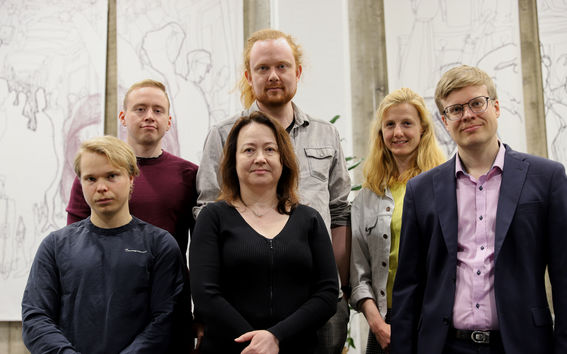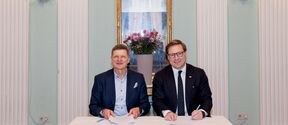Breast cancer cells use forces to open up channels through tissue
A new method reveals that cancer cells can spread by rapidly applying forces to tissue material.

Developing chemotherapy drugs against breast cancer is costly, slow, and often inefficient, with more than 95% of screened drug candidates failing in patient trials. A groundbreaking technique for 3D cell culturing, developed by researchers at Finland’s Aalto University, offers unprecedented insight into the spread of cancer cells through tissue. The technique paves the way to improved efficacy in screening for chemotherapy drug candidates, potentially enabling the screening out of non-viable drug candidates much earlier in the process.
Moving beyond conventional, 2D cell cultures, the biomechanical analysis technique allows breast cancer cells to be grown within 3D cell culture material that more accurately mimics the structures of human tissue, explains principal investigator Juho Pokki.

“Cancer cells actually feel the tissue that they’re in, and they can change their behaviour based on their surroundings. When they move at different speeds they sense distinct stresses. Stresses can be the difference between the cancer spreading or its movement being mechanically blocked,” says Pokki.
After chemotherapy, residual cancer cells may remain in the tissue and start to move, causing the cancer to recur. The research aims to control the properties of the extracellular matrix (ECM) that cancer cells use to move, investigating how to stop these residual cancer cells.
One version of this novel technique was recently announced in the journal of Soft Matter.
Breast cancer is the most prevalent cancer in women worldwide and forms the focus of the team’s research. In 2024 more than 300,000 people will receive a breast cancer diagnosis in the United States. Meanwhile, the most common cancers, breast, prostate and bowel cancer, kill more than 300,000 people in the European Union every year.
A biomechanical researcher and biomedical engineer who came to Aalto University via Stanford University and ETH Zurich, Pokki’s culturing technique allows researchers to account for variability of the ECM, either between cell culture samples or within the same sample.
“Our analysis allows us to take into account variations in the rigidity of tissue — particularly the related “stiffness” — and how this affects the way cancer cells grab and push and pull through the body, even following in each other’s paths where there is less resistance,” explains Pokki.
Researchers have for some time understood that the variable stiffness of the ECM is important when it comes to cancer spreading. However, they have hitherto lacked the tools to accurately measure the biomechanics of this cell movement, limiting their ability to capitalise fully on a deeper biomechanical understanding of cell behaviour.

The innovation is particularly timely, given that recent studies show not only an important relationship between the biomechanical properties of the ECM and the spread of cancer cells, but also a relationship between tissue stiffness and drug resistance.
“Not only does the biomechanical nature of human tissue affect how cancer spreads, but it also impacts its response to a drug. Essentially, it can take in a drug or spit it out, depending on its mechanical environment,” says Pokki.
“This new approach has the potential to radically improve drug screening for chemotherapy candidates. It’s an important step on the path towards faster discovery of chemotherapeutics for cancer patients.”
Pokki and his team have already been researching this cell-scale analysis technique for 5 years. The next phase of study focuses on using their microscopy-integrated tools towards improving drug efficacy testing of chemotherapeutics.
Dr. Juho Pokki
juho.pokki@aalto.fi
tel. +358 50 327 7999

A new method reveals that cancer cells can spread by rapidly applying forces to tissue material.


